2-BUTANONE OXIME
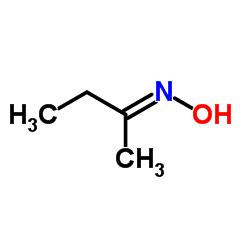
2-BUTANONE OXIME structure
|
Common Name | 2-BUTANONE OXIME | ||
|---|---|---|---|---|
| CAS Number | 96-29-7 | Molecular Weight | 87.120 | |
| Density | 0.9±0.1 g/cm3 | Boiling Point | 152.5±0.0 °C at 760 mmHg | |
| Molecular Formula | C4H9NO | Melting Point | -30 °C | |
| MSDS | Chinese USA | Flash Point | 60.0±0.0 °C | |
| Symbol |



GHS05, GHS07, GHS08 |
Signal Word | Danger | |
| Name | Ethyl Methyl Ketoxime |
|---|---|
| Synonym | More Synonyms |
| Density | 0.9±0.1 g/cm3 |
|---|---|
| Boiling Point | 152.5±0.0 °C at 760 mmHg |
| Melting Point | -30 °C |
| Molecular Formula | C4H9NO |
| Molecular Weight | 87.120 |
| Flash Point | 60.0±0.0 °C |
| Exact Mass | 87.068413 |
| PSA | 32.59000 |
| LogP | 0.65 |
| Vapour density | 3 (vs air) |
| Vapour Pressure | 1.9±0.5 mmHg at 25°C |
| Index of Refraction | 1.422 |
| InChIKey | WHIVNJATOVLWBW-PLNGDYQASA-N |
| SMILES | CCC(C)=NO |
| Stability | Stable. Combustible. Incompatible with strong oxidizing agents. May react with strong acids to form an explosive material. |
| Water Solubility | 114 g/L (20 ºC) |
Synonym:Ethyl methyl ketone oxime; Ethyl methyl ketoxime; 2-Butanone oxime; Methyl ethyl ketoxime; MEK-oxime Section 2 - COMPOSITION, INFORMATION ON INGREDIENTS
Risk Phrases: 21 40 41 43 Section 3 - HAZARDS IDENTIFICATION EMERGENCY OVERVIEW
Harmful in contact with skin. Limited evidence of a carcinogenic effect. Risk of serious damage to eyes. May cause sensitization by skin contact. Potential Health Effects Eye: Causes severe eye irritation. Skin: Harmful if absorbed through the skin. May cause skin sensitization, an allergic reaction, which becomes evident upon re-exposure to this material. Ingestion: Methemoglobinemia is characterized by dizziness, drowsiness, headache, shortness of breath, cyanosis (bluish discoloration of skin due to deficient oxygenation of the blood), rapid heart rate and chocolate-brown colored blood. May be harmful if swallowed. Overexposure may cause methemoglobinemia. Inhalation: Not available. Chronic: Chronic exposure may cause liver damage. Section 4 - FIRST AID MEASURES Eyes: Flush eyes with plenty of water for at least 15 minutes, occasionally lifting the upper and lower eyelids. Get medical aid immediately. Skin: Get medical aid. Flush skin with plenty of water for at least 15 minutes while removing contaminated clothing and shoes. Remove contaminated clothing and shoes. Ingestion: If victim is conscious and alert, give 2-4 cupfuls of milk or water. Get medical aid immediately. Inhalation: Get medical aid immediately. Remove from exposure and move to fresh air immediately. If not breathing, give artificial respiration. If breathing is difficult, give oxygen. Notes to Physician: Section 5 - FIRE FIGHTING MEASURES General Information: As in any fire, wear a self-contained breathing apparatus in pressure-demand, MSHA/NIOSH (approved or equivalent), and full protective gear. During a fire, irritating and highly toxic gases may be generated by thermal decomposition or combustion. Flammable liquid and vapor. Vapors are heavier than air and may travel to a source of ignition and flash back. Vapors can spread along the ground and collect in low or confined areas. Extinguishing Media: Use extinguishing media most appropriate for the surrounding fire. Section 6 - ACCIDENTAL RELEASE MEASURES General Information: Use proper personal protective equipment as indicated in Section 8. Spills/Leaks: Absorb spill with inert material (e.g. vermiculite, sand or earth), then place in suitable container. Clean up spills immediately, observing precautions in the Protective Equipment section. Remove all sources of ignition. Provide ventilation. Section 7 - HANDLING and STORAGE Handling: Wash thoroughly after handling. Remove contaminated clothing and wash before reuse. Avoid contact with eyes, skin, and clothing. Avoid ingestion and inhalation. Use only with adequate ventilation. Keep away from heat, sparks and flame. Storage: Keep away from sources of ignition. Keep container closed when not in use. Store in a cool, dry, well-ventilated area away from incompatible substances. Section 8 - EXPOSURE CONTROLS, PERSONAL PROTECTION Engineering Controls: Facilities storing or utilizing this material should be equipped with an eyewash facility and a safety shower. Use process enclosure, local exhaust ventilation, or other engineering controls to control airborne levels. Exposure Limits CAS# 96-29-7: Personal Protective Equipment Eyes: Wear chemical splash goggles. Skin: Wear appropriate protective gloves to prevent skin exposure. Clothing: Wear appropriate protective clothing to prevent skin exposure. Respirators: A respiratory protection program that meets OSHA's 29 CFR 1910.134 and ANSI Z88.2 requirements or European Standard EN 149 must be followed whenever workplace conditions warrant respirator use. Section 9 - PHYSICAL AND CHEMICAL PROPERTIES Physical State: Clear liquid Color: clear colorless to pale yellow Odor: Not available. pH: Not available. Vapor Pressure: 0.904 mm Hg @ 25 deg C Viscosity: Not available. Boiling Point: 152.5 deg C @ 760 mm Hg Freezing/Melting Point: -29.5 deg C Autoignition Temperature: Not available. Flash Point: 59 deg C ( 138.20 deg F) Explosion Limits, lower: Not available. Explosion Limits, upper: Not available. Decomposition Temperature: Solubility in water: Slightly soluble. Specific Gravity/Density: .9200 g/cm3 Molecular Formula: C4H9NO Molecular Weight: 87.12 Section 10 - STABILITY AND REACTIVITY Chemical Stability: Stable under normal temperatures and pressures. Conditions to Avoid: High temperatures, ignition sources. Incompatibilities with Other Materials: Strong oxidizing agents, strong acids. Hazardous Decomposition Products: Nitrogen oxides, carbon monoxide, carbon dioxide. Hazardous Polymerization: Has not been reported Section 11 - TOXICOLOGICAL INFORMATION RTECS#: CAS# 96-29-7: EL9275000 LD50/LC50: CAS# 96-29-7: Draize test, rabbit, eye: 100 uL Severe; Oral, mouse: LD50 = 1 gm/kg; Oral, rat: LD50 = 930 mg/kg; Skin, rabbit: LD50 = 200 uL/kg. Skin, rabbit: LD50 = 200 uL/kg = 184 mg/kg. Carcinogenicity: Methyl ethyl ketoxime - Not listed by ACGIH, IARC, or NTP. Other: See actual entry in RTECS for complete information. Section 12 - ECOLOGICAL INFORMATION Section 13 - DISPOSAL CONSIDERATIONS Dispose of in a manner consistent with federal, state, and local regulations. Section 14 - TRANSPORT INFORMATION IATA Shipping Name: FLAMMABLE LIQUIDS, N.O.S. Hazard Class: 3 UN Number: 1993 Packing Group: III IMO Shipping Name: FLAMMABLE LIQUIDS, N.O.S. Hazard Class: 3 UN Number: 1993 Packing Group: III RID/ADR Shipping Name: FLAMMABLE LIQUIDS, N.O.S. Hazard Class: 3 UN Number: 1993 Packing group: III Section 15 - REGULATORY INFORMATION European/International Regulations European Labeling in Accordance with EC Directives Hazard Symbols: XN Risk Phrases: R 21 Harmful in contact with skin. R 40 Limited evidence of a carcinogenic effect. R 41 Risk of serious damage to eyes. R 43 May cause sensitization by skin contact. Safety Phrases: S 13 Keep away from food, drink and animal feeding stuffs. S 23 Do not inhale gas/fumes/vapour/spray. S 26 In case of contact with eyes, rinse immediately with plenty of water and seek medical advice. S 36/37/39 Wear suitable protective clothing, gloves and eye/face protection. WGK (Water Danger/Protection) CAS# 96-29-7: 1 Canada CAS# 96-29-7 is listed on Canada's DSL List. CAS# 96-29-7 is not listed on Canada's Ingredient Disclosure List. US FEDERAL TSCA CAS# 96-29-7 is listed on the TSCA inventory. SECTION 16 - ADDITIONAL INFORMATION N/A |
CHEMICAL IDENTIFICATION
HEALTH HAZARD DATAACUTE TOXICITY DATA
MUTATION DATA
|
| Symbol |



GHS05, GHS07, GHS08 |
|---|---|
| Signal Word | Danger |
| Hazard Statements | H312-H317-H318-H351 |
| Precautionary Statements | P280-P305 + P351 + P338 |
| Personal Protective Equipment | Eyeshields;Faceshields;full-face respirator (US);Gloves;multi-purpose combination respirator cartridge (US);type ABEK (EN14387) respirator filter |
| Hazard Codes | Xn:Harmful; |
| Risk Phrases | R21;R40;R41;R43 |
| Safety Phrases | S13-S23-S26-S36/37/39-S61-S45-S36/37-S25 |
| RIDADR | UN 1993 3/PG 3 |
| WGK Germany | 1 |
| RTECS | EL9275000 |
| Packaging Group | III |
| Hazard Class | 3 |
| HS Code | 29280090 |
| Precursor 10 | |
|---|---|
| DownStream 9 | |
| HS Code | 2928000090 |
|---|---|
| Summary | 2928000090 other organic derivatives of hydrazine or of hydroxylamine VAT:17.0% Tax rebate rate:9.0% Supervision conditions:none MFN tariff:6.5% General tariff:20.0% |
|
Slow oxidation of acetoxime and methylethyl ketoxime to the corresponding nitronates and hydroxy nitronates by liver microsomes from rats, mice, and humans.
Toxicol. Sci. 47(2) , 144-50, (1999) Acetoxime and methylethyl ketoxime (MEKO) are tumorigenic in rodents, inducing liver tumors in male animals. The mechanisms of tumorigenicity for these compounds are not well defined. Oxidation of the... |
|
|
Single-pot template transformations of cyanopyridines on a Pd(II) centre: syntheses of ketoimine and 2,4-dipyridyl-1,3,5-triazapentadiene palladium(II) complexes and their catalytic activity for microwave-assisted Suzuki-Miyaura and Heck reactions.
Dalton Trans. (16) , 3074-84, (2009) [2 + 3] cycloaddition of the pyrrolin N-oxide (-)O[upper bond 1 start](+)N[double bond, length as m-dash]CHCH(2)CH(2)C[upper bond 1 end]Me(2) with 2-cyanopyridine NC(5)H(4)(2-CN) in the presence of Pd... |
|
|
Oxidative effects in human erythrocytes caused by some oximes and hydroxylamine.
Arch. Toxicol. 72(5) , 270-6, (1998) Both oximes and hydroxylamine (HYAM) are compounds with known oxidative capacity. We tested in vitro whether acetaldoxime (AAO), cyclohexanone oxime (CHO), methyl ethyl ketoxime (MEKO) or HYAM affect ... |
| (2E)-N-Hydroxybutan-2-imine |
| 2-BUTANONE OXIME |
| 2-Butanone, oxime, (2E)- |
| MFCD00013935 |
| EINECS 202-496-6 |
| (2E)-N-Hydroxy-2-butanimine |
 CAS#:78-93-3
CAS#:78-93-3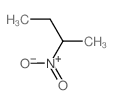 CAS#:600-24-8
CAS#:600-24-8 CAS#:78-92-2
CAS#:78-92-2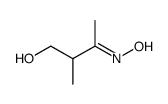 CAS#:69125-01-5
CAS#:69125-01-5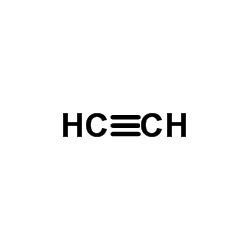 CAS#:74-86-2
CAS#:74-86-2 CAS#:681-01-6
CAS#:681-01-6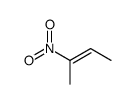 CAS#:4812-23-1
CAS#:4812-23-1 CAS#:107093-01-6
CAS#:107093-01-6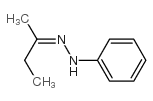 CAS#:1129-62-0
CAS#:1129-62-0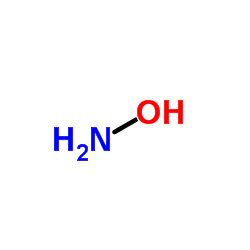 CAS#:7803-49-8
CAS#:7803-49-8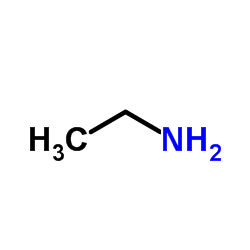 CAS#:75-04-7
CAS#:75-04-7 CAS#:64-19-7
CAS#:64-19-7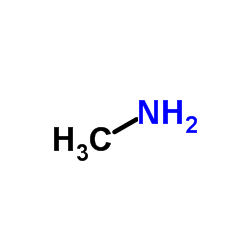 CAS#:74-89-5
CAS#:74-89-5 CAS#:513-49-5
CAS#:513-49-5 CAS#:13250-12-9
CAS#:13250-12-9 CAS#:463-58-1
CAS#:463-58-1 CAS#:102-08-9
CAS#:102-08-9 CAS#:95-45-4
CAS#:95-45-4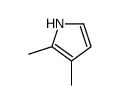 CAS#:600-28-2
CAS#:600-28-2
